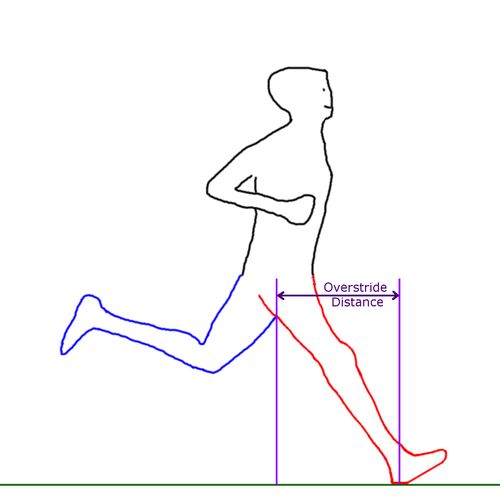Difference between revisions of "Overstriding"
From Fellrnr.com, Running tips
User:Fellrnr (User talk:Fellrnr | contribs) |
User:Fellrnr (User talk:Fellrnr | contribs) |
||
| Line 14: | Line 14: | ||
* The simplest is to be aware of the problem and notice where your feet land in relation to your body. | * The simplest is to be aware of the problem and notice where your feet land in relation to your body. | ||
* Listening to the sound your feet make when landing can give a clue to overstriding and other problems. Your feet should make a soft patting sound rather than scraping or slapping. | * Listening to the sound your feet make when landing can give a clue to overstriding and other problems. Your feet should make a soft patting sound rather than scraping or slapping. | ||
| − | * You can ask an experienced runner to look at your stride to check for overstriding. This is easiest on a treadmill, but running on a treadmill may change your Running Form. | + | * You can ask an experienced runner to look at your stride to check for overstriding. This is easiest on a [[Treadmill|treadmill]], but running on a treadmill may change your Running Form. |
* The ideal option is [[High Speed Video Analysis]]. | * The ideal option is [[High Speed Video Analysis]]. | ||
=Correcting Overstriding= | =Correcting Overstriding= | ||
Overstriding can be corrected consciously by not reaching forward with the feet, but allowing them to land under the hips. Increasing [[Cadence]] also tends to reduce overstriding. | Overstriding can be corrected consciously by not reaching forward with the feet, but allowing them to land under the hips. Increasing [[Cadence]] also tends to reduce overstriding. | ||
Latest revision as of 15:29, 29 July 2013
The picture below is an example of a common Running Form problem called overstriding. In the example below there are several issues:
- The foot is landing ahead of the hips rather than under the hips. This causes some of the landing force to go up the leg and push back on the runner, acting as a break.
- The leg is straight, so there is little shock absorption from the quads that would occur as the knee bends.
- The heel touches down first, so the calf muscles cannot absorb the landing forces in the way that happens when the front of the foot lands and moves up.
- Because the foot is so far ahead of the body, there is no chance of paw back, so the foot is travelling forward at the same speed as the body.
These factors cause the foot to make contact with the ground while still moving forward, and that force is not absorbed by the quads or calf. The force slows down the runner and is transmitted through the foot, up the ankle, lower leg bones, through the knee and on up the body putting higher levels of stress than would have been the case with a better running form.
1 Evaluating Overstriding
There are four main ways of evaluating overstriding.
- The simplest is to be aware of the problem and notice where your feet land in relation to your body.
- Listening to the sound your feet make when landing can give a clue to overstriding and other problems. Your feet should make a soft patting sound rather than scraping or slapping.
- You can ask an experienced runner to look at your stride to check for overstriding. This is easiest on a treadmill, but running on a treadmill may change your Running Form.
- The ideal option is High Speed Video Analysis.
2 Correcting Overstriding
Overstriding can be corrected consciously by not reaching forward with the feet, but allowing them to land under the hips. Increasing Cadence also tends to reduce overstriding.

